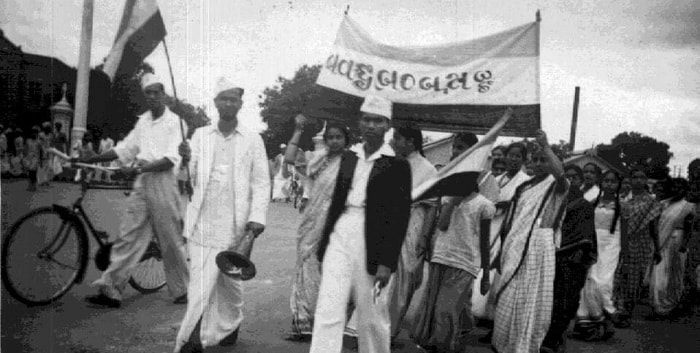Introduction
The Indian national movement, also known as the Indian freedom movement, was one of the biggest mass movements that modern society has ever witnessed. Undoubtedly, it was a movement that galvanized many people of all classes and ideologies into a political action and brought India into independence from the British Raj. Essentially, it started its struggle with the mighty colonial empire in 1857 and ended on 15 August 1947, spanning a total of 90 years. On that account, the movement during India’s freedom struggle is a series of events that took place with the goal of ending the British rule in the country.
The Revolt of 1857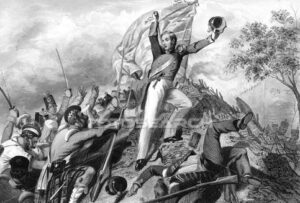
The initial Indian Rebellion of 1857 is the first war of independence which was hugely widespread yet unsuccessful against the British rule in India. This rebellion was sparked when the soldiers who served in the British East and central India and Indian kingdoms rebelled against the company.
Initially, it started in Meerut by the Indian troops also known as sepoys in the service then spread to involve local rulers and people from Delhi, Kanpur, Agra, and Lucknow. In 1857, many Indians were distressed by the fast cultural changes that are imposed by the British as well as the fear of Christianizing Hindu and Muslim Indians. As a result, a new type of rifle cartridge was handed to the British Indian Army soldiers and it had been greased with cow and pig fat which are an abomination to both Indian religions.
After the revolt came to an end, the British partitioned the region into the Princely States and British India while focusing on the former region’s industrial development. Eventually, the country developed a class of educated elites who sought Indian political rights and representation using political organizations. Some of the leaders of this revolt were women such as Rani Lakshmi Bai who led the people of Jhansi and Awadh against the British.
All in all, the Indian Revolt began on May 10th, 1857 as the Bengali Muslim troops walked to Delhi and pledged their support to the Mughal emperor. After a year full of struggles, the rebels surrendered in June 1858.
Aftermath Autocratic Paternalism
The revolt of 1857 was a huge turning point in the history of modern India. As a matter of fact, its immediate result was the British abolishment of the British East India Company administration and replaced it with the direct rule under the British government. In particular, a Viceroy was appointed to represent the Crown. In concrete terms, this only introduced a more personal perspective into the government in addition to removing the commercialism that was lingered in the directors’ court.
When proclaiming the new direct policy to “the Princes, Chiefs, and Peoples of India,” the Queen promised equal treatment under this British law. Nonetheless, the Indian mistrust of British rule became a legacy of the rebellion of 1857. To elaborate, the control of India was given to a British Governor-General whose job is to report back to the British Parliament. Though it should be noted that the British Raj involved only about two-thirds of modern India. The other portions were under the local prince’s control.
As the British tried to integrate Indian higher castes and rulers into the government, they embarked on a program of reform. Essentially, they stopped land grabs, admitted Indians into civil service, and decreed religious tolerance. In addition, they increased the number of British soldiers and allowed only them to handle artillery.
Even though Queen Victoria promised that the British government would work to enhance and improve its Indian subjects, it meant to educate the Indian people in the British modes of thought and put down cultural practices such as sati. The latter is a practice of immolating a widow on her husband’s death. This means that the British thought of their rule as a form of “autocratic paternalism.” Also, the British created “divide and rule” policies that put both Hindu and Muslim Indians against each other. Fast forward to 1905, the colonial government split up Bengal into Hindu and Muslim sections which were revoked after strong protests.
The Indian National Congress Creation During Indian Freedom Movement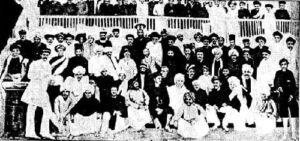
The Indian freedom movement led to the eventual formation of the Indian National Congress in 1885. Initially, their goal was to promote Indian nationalism while giving a voice to the Indian freedom movement which was aimed at British imperialism in the country. Besides, the early actions of the National Congress emphasized promoting self-government for Indian citizens which is referred to as ‘swaraj’. In the 20th century, this term became especially important to Mahatma Gandhi as he and the Indian National Congress attempted to achieve independence for the country from British imperial rule.
Furthermore, the achievements of the congress were undermined by its singular failure to catch the interest of Muslims who felt that their representation in government service was insufficient. In general, what deepened the concerns of the minority status were the constant attacks by Hindu reformers against religious conversion, the preservation of Urdu in Arabic script, and cow slaughter. Also, these led to the denial of rights if Congress alone were to represent the Indian people.
As a result, Sir Syed Ahmed Khan started a movement for Muslim regeneration that culminated in the establishment of the Muhammadan Anglo-Oriental College in 1875 at Aligarh, Uttar Pradesh. The main objective of this was to educate wealthy students by focusing on the compatibility of Islam with modern western knowledge. Nonetheless, the diversity among India’s Muslims made it almost impossible to develop uniform intellectual and cultural regeneration.
British India During World War I
During this war, Britain declared war on Germany on India’s behalf without even consulting the country’s leaders. As a matter of fact, more than 1.5 million Indian soldiers and laborers were sent to serve in the British Indian Army by the time of the Armistice. Consequently, a total of 60,000 Indian soldiers were either killed or reported missing.
In April 1919, British troops fired on more than 15,000 unarmed protesters who gathered at Amritsar, in Punjab. Even though the official death toll of the Amritsar Massacre was reported 379 only, hundreds of men, women, and children were killed.
Later, supporters of the Indian freedom movement started to argue that India’s role in World War I should have made it gain some aspects of self-government. For this reason, the idea continued to grow in popularity, especially with Mahatma Gandhi’s return to the country in 1915. In fact, he was one of the most essential factors that accounted for the eventual triumph of the Indian people over the British. Additionally, he introduced the idea of social justice in regards to empathy for others over the individual pursuit of happiness.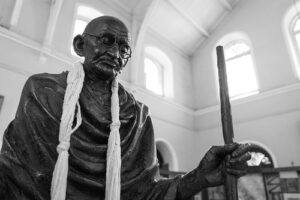
In 1920, the Non-Cooperation Movement was one of the most significant phases of the Indian freedom movement. During this period, protesters refused to buy British goods and adopted the use of local handicrafts such as picket liquor shops in order to validate the Indian values of honor and integrity.
British India During World War II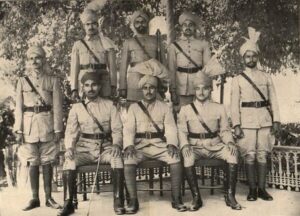
World war 2 was one of the most significant factors in accelerating the Indian freedom movement to independence from many British and non-British colonies. This means that when World War II broke out, India contributed hugely to the British war once again. Besides the troops, the princely states donated a considerable amount of cash as well. It should be noted that during the period 1945–1965, decolonization set more than three dozen countries to freedom from their colonial powers. Consequently, several factors contributed to the defeat of the British Empire in India. One of the important factors was India having a significant volunteer army of 2.5 million men and nearly 87,000 local soldiers dying in combat by the end of the war.
The Indian freedom movement was very powerful and well built by this time and the British rule was extremely resented. In fact, 40,000 Indian POWs were hired by Japan to fight against the Allies in exchange for the hope of help with the Indian freedom movement. Nonetheless, most Indians remained loyal as the other troops fought in Burma, Italy, North Africa, and other places.
The Struggle for Indian Independence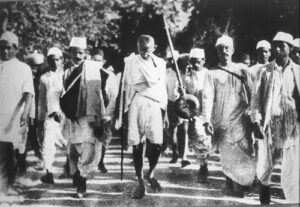
The Government of India Act in 1935 provided for the establishment of provincial legislatures across the entire colony and created a federal government for the princely and provinces states. In addition, it granted the right to vote to about 10% of the country’s male population. As a result, these constant moves toward limited self-governance made the entire country more impatient for true self-rule.
Moreover, Britain sent an envoy to India in 1942 which was led by the British Labor politician Stafford Cripps offering future dominion status in return for aid with recruiting more soldiers. As a matter of fact, Cripps may have made a secret agreement with the Muslim League to allow the Muslims to drop out of the future Indian state.
On the whole, the push that occurred to the Indian freedom movement was in three interconnected stages: the non-cooperative movement, the civil disobedience movement, and lastly the “Quit India” movement. It should be noted that these stages were not rigidly defined; they naturally flowed into one another as a consequence of the contemporary events.
India Gaining Its Independence: The End of the Indian Freedom Movement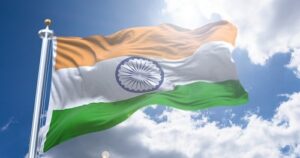
As a result of the continuous protests by both the Indian National Congress and Gandhi, the British realized it was extremely difficult to maintain its control over the Indian subcontinent. Therefore, India was partitioned in 1947 with the British approval when Viscount Lord Louis Mountbatten announced it into secular India and Muslim Pakistan. This means that the country was split up into Pakistan (for Muslims) and India (for Hindus and Sikhs).
On July 18th, the British government set the lines of new divisions between the states and the British parliament formally agreed to the country’s partition and independence by passing the Indian Independence Act. Therefore, on 15 August 1947, India became officially an independent nation and the British imperial rule had ended completely. Nonetheless, violent clashes between Muslims, Hindus, and Sikhs followed.
In 1948, Gandhi was shot while walking to a prayer meeting by Hindu nationalist Nathuram Godse. Soon after, the power of the Indian National Congress shifted to become the main political force in the whole country. As the Indian freedom movement came to an end, the prime minister Patel took the responsibility of unifying 565 princely states as well as steering efforts by his “iron fist in a velvet glove” policies. The latter was exemplified by the use of military force in order to integrate Jammu, Junagadh, Hyderabad, and Kashmir state into India. In November 1950, the Constituent Assembly finished drafting the constitution, and in January 1951, the Republic of India was officially proclaimed.
Conclusion
To sum up, the Indian freedom movement went through a series of events where the Indian people and army struggled to accomplish independence for their country. Therefore, this article discusses the important dates of the Indian freedom movement as well as the road to the independent country that India is today.
- Also, Check The History of Indian Currency Notes and Coins.
